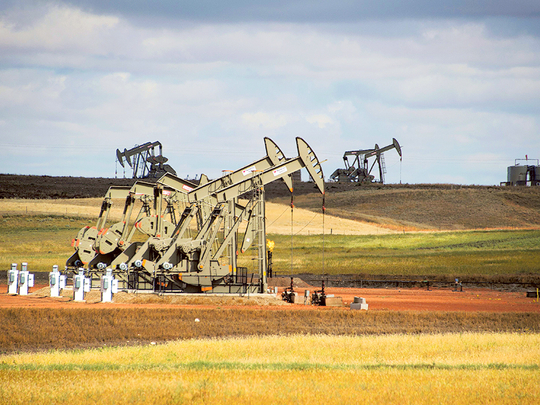
New York: Long is the new deep. Just ask SM Energy Co, which on Tuesday spent $1.6 billion to expand its acreage in America’s most prodigious oil patch, the Permian Basin.
The unique geologic make-up of the Permian, consisting of multiple layers of oil- and gas-trapping shale that span hundreds of miles, is well suited for a technique that’s allowing producers to pull more crude out of fewer wells. Explorers there are drilling longer and longer wells, running thousands of feet sideways to tap as much of the crude-bearing rock as possible.
The technique means owning drilling rights across 405 hectares in the Permian may actually be just as valuable as holding ones for 5,000 because you’re having to bore fewer wells. It’s a strategy more and more companies are taking advantage of to cope in an era of historically low oil and natural gas prices.
This ability to bore longer so-called laterals “adds enormous value to each well that we drill,” Herbert Vogel, SM Energy’s executive vice president for operations, said during a call Tuesday on its purchase of 14,447 hectares in the Permian from QStar LLC. “I can’t understate how much of a difference contiguous acreage makes.”
Trading leases
The average length of laterals has increased by hundreds of feet in both oil- and gas-bearing rock this year, with an unofficial record 5,652 metres, about 5.6 kilometres, claimed by a well in Ohio. Denver-based SM said it expects to drill 3,048-metre laterals over most of its Texas property in the Permian. And it’s not alone.
“It’ll get more and more common,” said Scott Sheffield, chief executive officer of Pioneer Natural Resources Co, among the largest producers in the Permian Basin. Sheffield said he’s already entertaining trading leases with rivals to expand holdings and take advantage of lateral drilling.
Doubling laterals from 1,524 metres (5,000 feet), combined with other techniques, could make a well about four and a half times more valuable, Vogel said. SM acquired a 3,048-metre lateral well as part of an October 5 acquisition of Rock Oil Holdings and plans six more in the Permian, spokesman Jeremy Kline said by phone Wednesday.
“It only takes another two or three days to drill that extra 5,000 feet,” Sheffield said. “We’re only spending 10 per cent more and we’re getting a 25 per cent net increase in productivity.”
Cheaper, faster
Cash-strapped Chesapeake Energy Corp has pushed out its laterals 31 per cent to average about 8,000 feet this year in Texas’s Eagle Ford shale and is targeting 10,000 feet in the Haynesville shale centred in Louisiana, according to Bloomberg Intelligence.
Still, the unofficial record set by Eclipse Resources Corp.’s Purple Hayes well in Ohio may stand for a while. At 5,652 metres, the super lateral, as Eclipse calls it, has exceeded expectations even at current oil prices, Chief Executive Officer Ben Hulburt said by phone.
“We fracked it cheaper and faster than we thought we would,” Hulburt said. “You’re getting about two and a half wells for the cost of about one and a half.”
Eclipse plans two, 19,000-foot laterals in the Utica shale of the eastern US, but it won’t drill them unless oil prices top $50 a barrel, Hulburt said.
“Eclipse clearly showed the industry that they can actually lower their cost per foot,” said Tony Angelle, US. Northeast vice president of oil services provider Halliburton Co. “Their peers are looking at this.”












